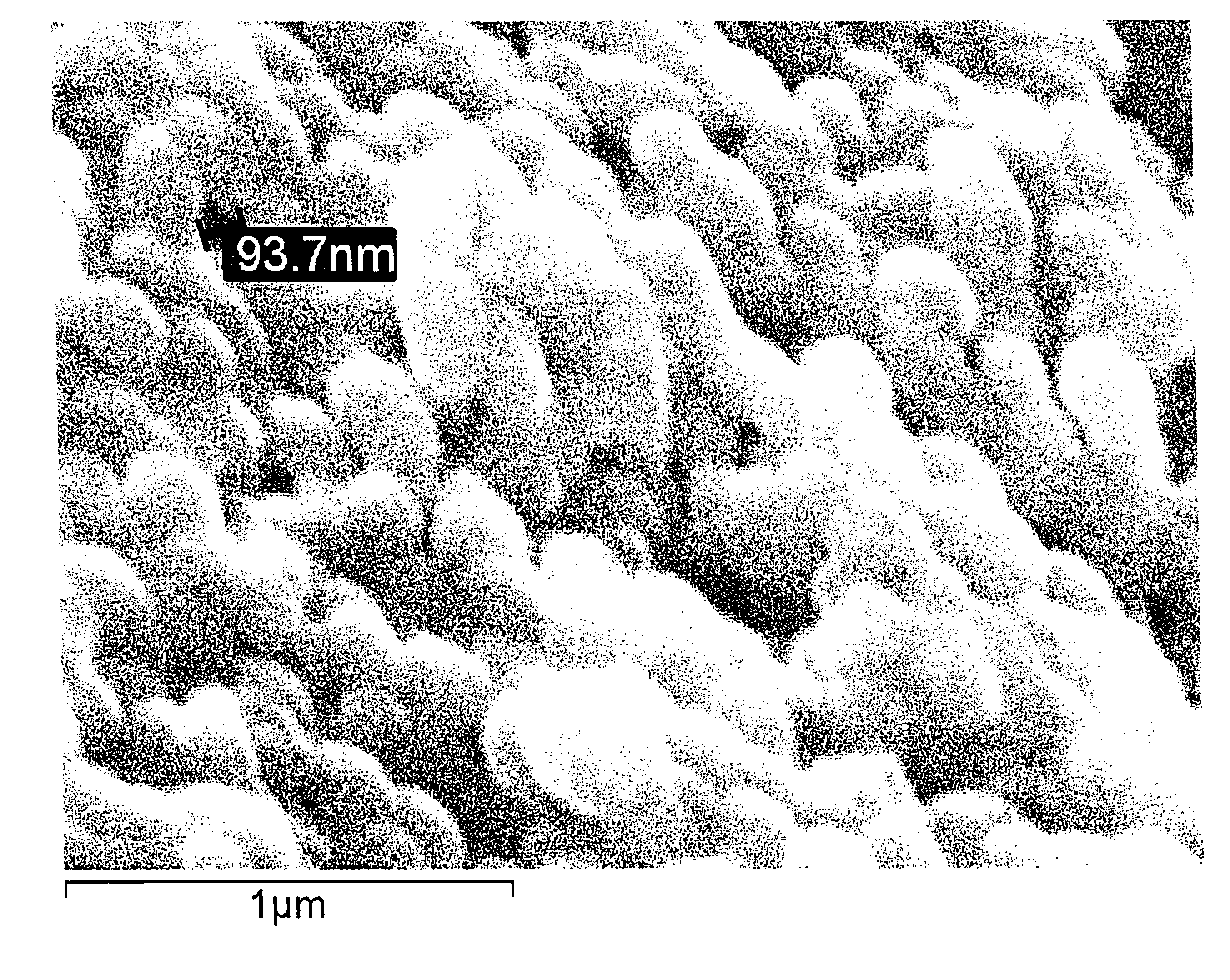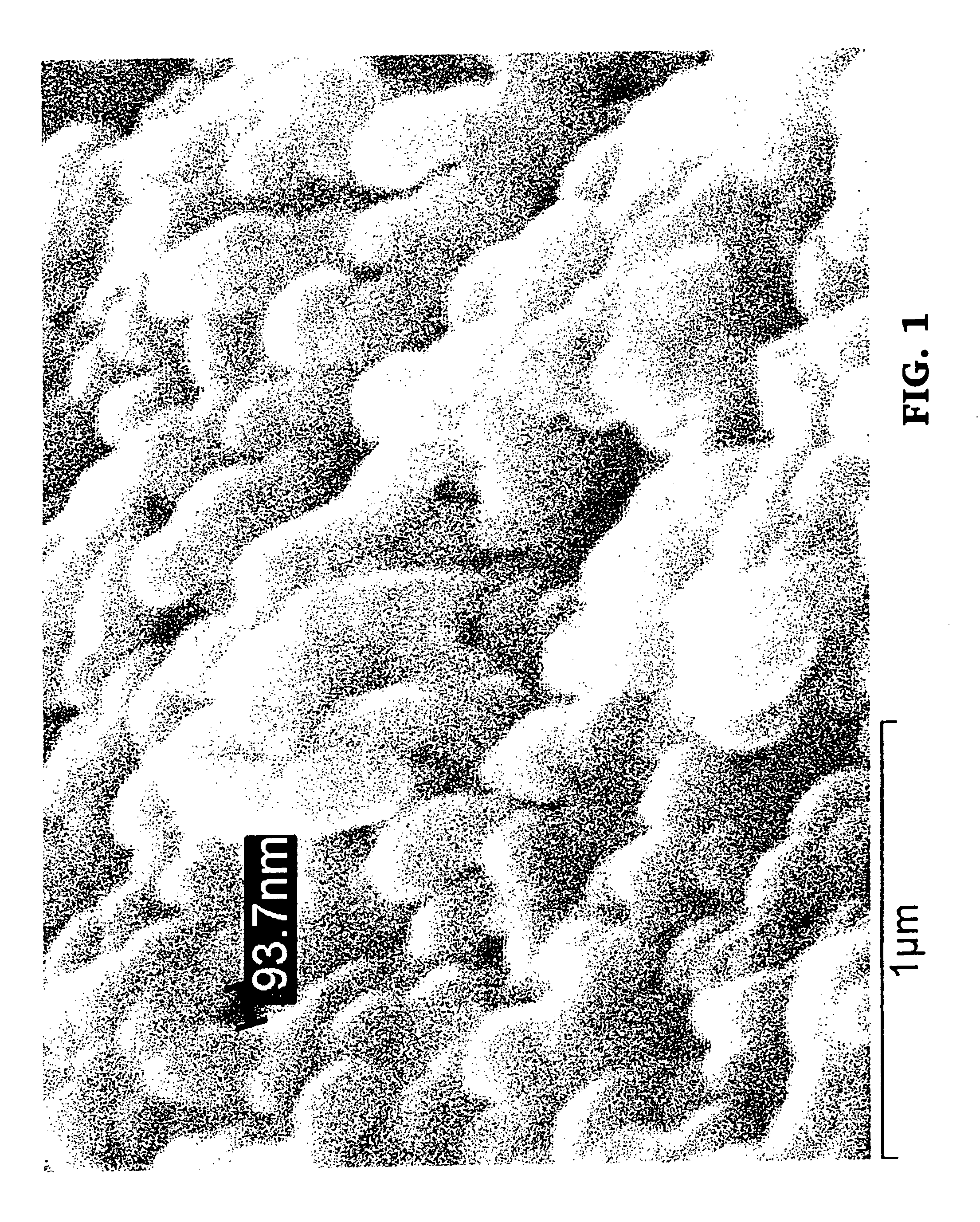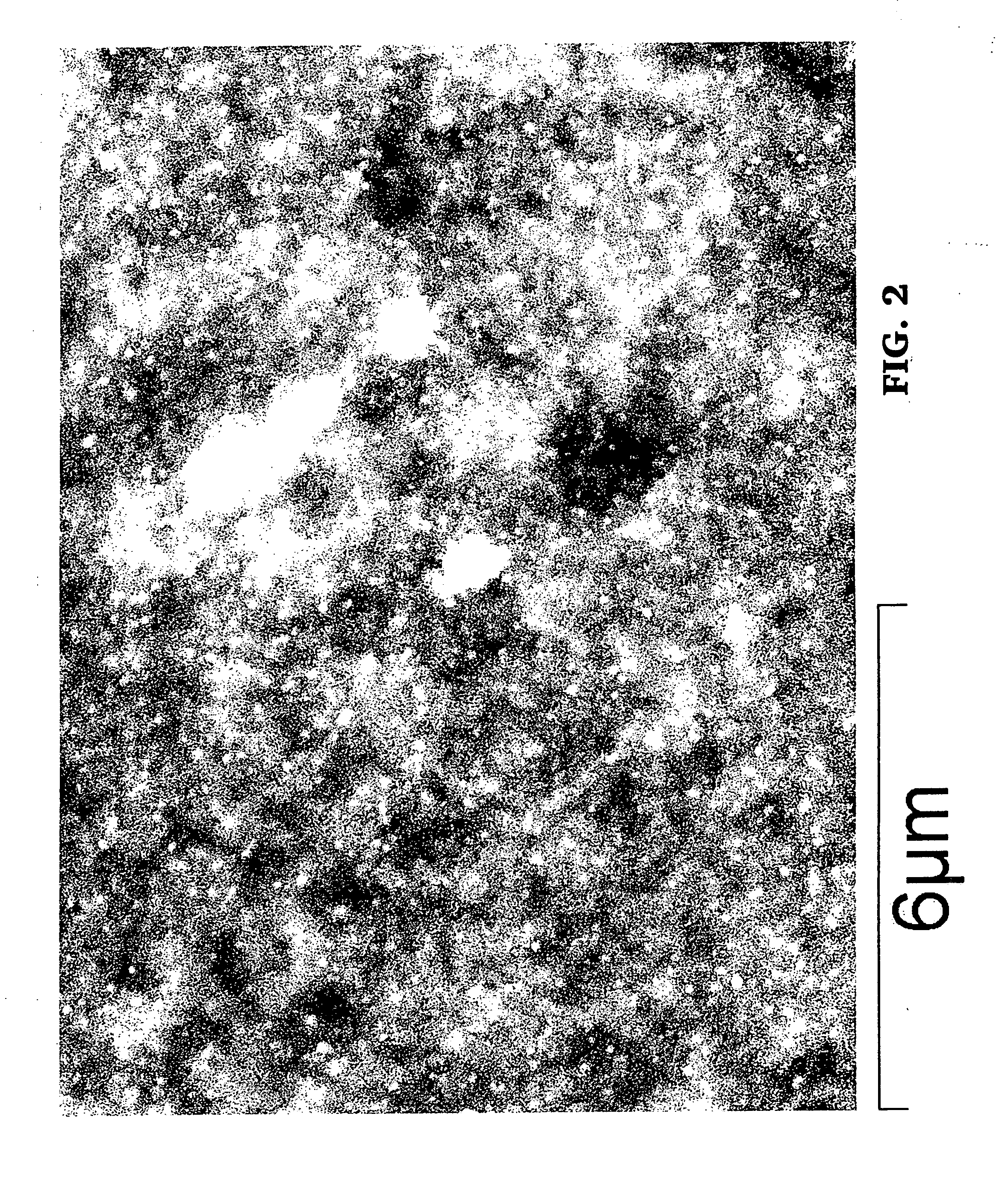Noble metal alkali borosilicate glass composition
a technology of borosilicate glass and noble metal, which is applied in the field of ceramic catalysts, can solve the problems of high processing rate applications, high cost of prior art catalysts, and achieve low surface area-to-volume ratio, high processing rate, and limited effectiveness
- Summary
- Abstract
- Description
- Claims
- Application Information
AI Technical Summary
Benefits of technology
Problems solved by technology
Method used
Image
Examples
example 1
[0133]Details of the process to prepare the ceramic catalyst:[0134]a) The raw materials are weighed according to Table 3 below and mixed.
TABLE 3WT gMOLES %SiO2101.3054.94B2O360.1936.79Na2O8.224.32K2O11.403.95[0135]b) The mixed raw materials are placed in a crucible / furnace at a temperature of approximately 1,250° C., and stirred for 4 hours.[0136]c) The glass is cooled to room temperature without phase separation by pouring it onto a metal plate.[0137]d) Heat treat the uniform glass for approximately 4 hours at approximately 575° C. to cause phase separation.[0138]e) Leach each 3 g of phase-separated glass in 100 ml 1 molar NH4Cl at 95° C. for 3 days.[0139]f) Cool to room temperature.[0140]g) Wash the porous glass (PG) with water until free of Cl.[0141]h) Dry the PG at 95° C. for at least 30 minutes.[0142]i) Wash the PG with approximately 1 molar of NH4OH.[0143]j) Wash with water until substantially no smell of NH3 remains.[0144]k) Dry the PG preferably at a low temperature, e.g., 3...
example 2
[0154]Details of the process to prepare the ceramic catalyst:[0155]a) The raw materials are weighed according to Table 3 from Example 1 and mixed.[0156]b) The mixed raw materials are placed in a crucible / furnace at a temperature of approximately 1,250° C., and stirred for 4 hours.[0157]c) The glass is cooled to room temperature without phase separation by pouring it onto a metal plate.[0158]d) Heat treat the uniform glass for approximately 4 hours at approximately 575° C. to cause phase separation.[0159]e) Leach each 3 g of phase-separated glass in 100 ml 1 molar NH4Cl at 95° C. for 3 days.[0160]f) Cool to room temperature.[0161]g) Wash porous glass (PG) with water until free of Cl.[0162]h) Dry the PG at 95° C. for at least 30 minutes.[0163]i) Wash the PG with approximately 1 molar of NH4OH.[0164]j) Wash with water until substantially no smell of NH3 remains.[0165]k) Dry the PG preferably at a low temperature, e.g., 35° C.[0166]l) Soak the PG in 1 molar NH4OH.[0167]m) Dry the PG.[01...
example 3
[0182]Details of the process to prepare the ceramic catalyst:[0183]a) Appropriate raw materials are selected and weighed to form a composition of silver alkali borosilicate, wherein the alkali metals are carbonates and noble metal is silver. For example, an appropriate composition would include 56% SiO2, 36% B2O3, 3% Na2O, 3% K2O, 2% Ag2O. Ag2O may be also be first introduced into the composition by using, e.g., AgCl.[0184]b) The mixed raw materials are placed in a crucible / furnace at a temperature of approximately 1,250° C. to form a melt, and stirred for 4 hours.[0185]c) The melt is cooled to room temperature without phase separation by pouring it onto a metal plate, at which time the melt has become a uniform glass.[0186]d) Heat treat the uniform glass for approximately 1.5 hours at approximately 550° C. to cause phase separation.[0187]e) Cool the phase-separated glass to approximately room temperature.[0188]f) The silica poor phase now contains most of the Ag.[0189]g) Leach with...
PUM
| Property | Measurement | Unit |
|---|---|---|
| pore size | aaaaa | aaaaa |
| temperature | aaaaa | aaaaa |
| temperature | aaaaa | aaaaa |
Abstract
Description
Claims
Application Information
 Login to View More
Login to View More - R&D
- Intellectual Property
- Life Sciences
- Materials
- Tech Scout
- Unparalleled Data Quality
- Higher Quality Content
- 60% Fewer Hallucinations
Browse by: Latest US Patents, China's latest patents, Technical Efficacy Thesaurus, Application Domain, Technology Topic, Popular Technical Reports.
© 2025 PatSnap. All rights reserved.Legal|Privacy policy|Modern Slavery Act Transparency Statement|Sitemap|About US| Contact US: help@patsnap.com



